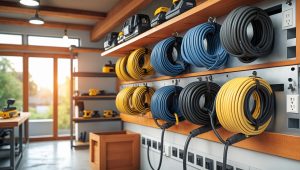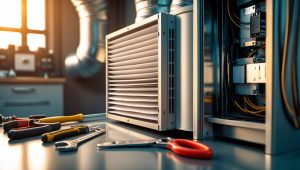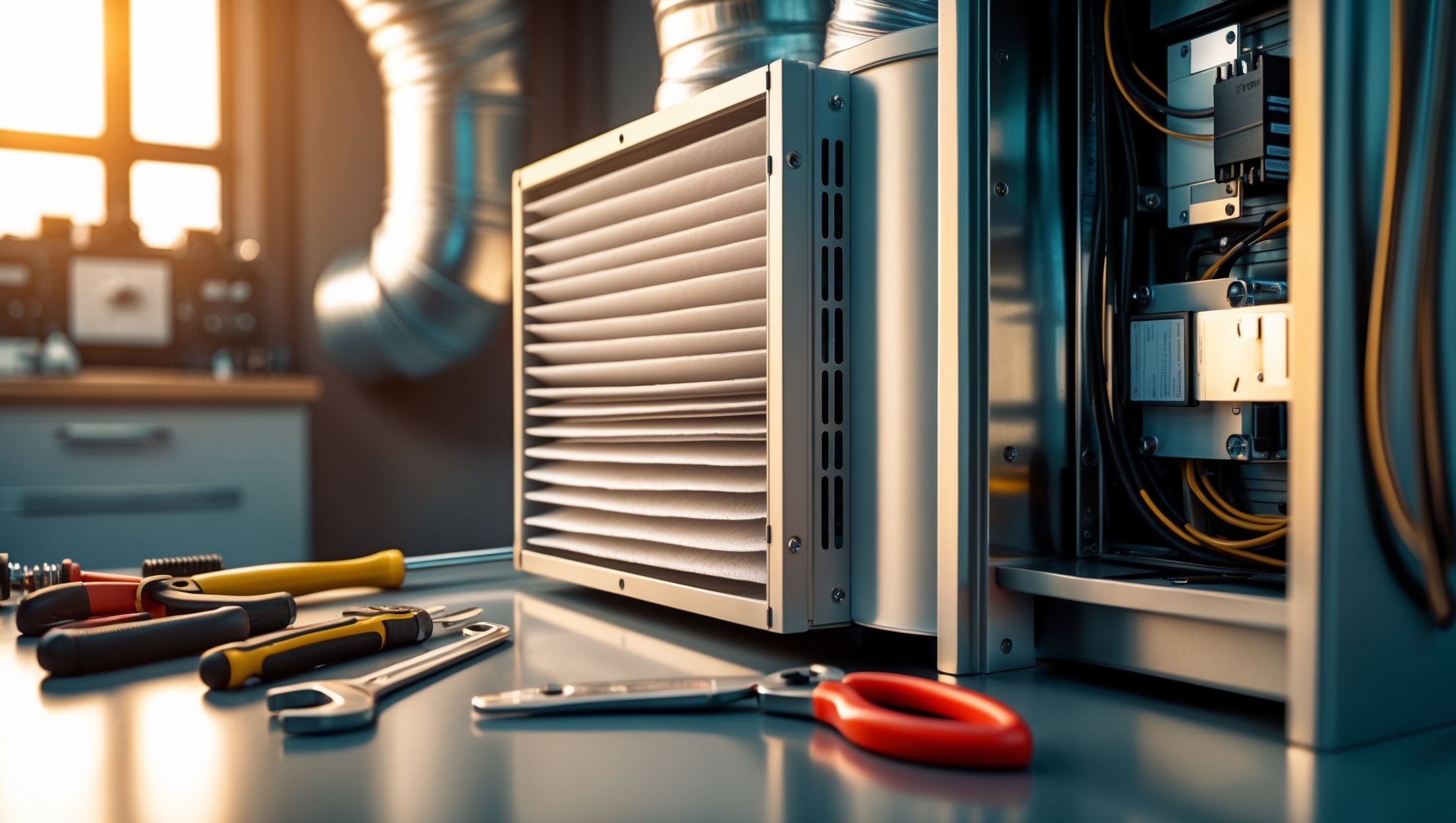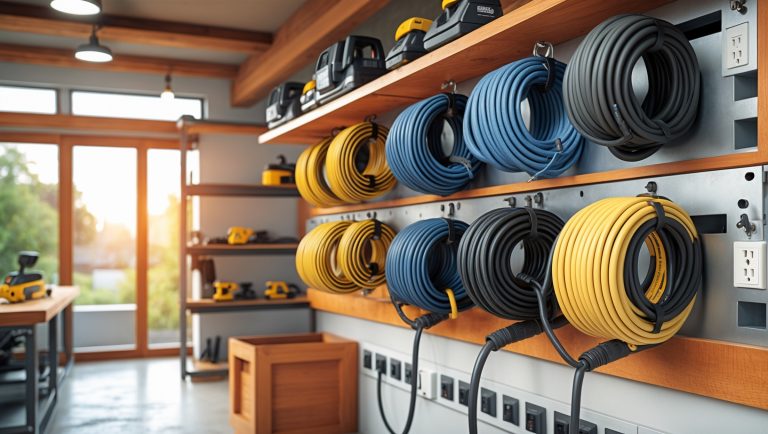Introduction: Why DIY HVAC Filter Replacement Matters
When it comes to home maintenance, few tasks deliver as much bang for your buck as regularly replacing your HVAC filter. Whether you’re battling seasonal allergies, seeking lower energy bills, or simply want your heating and cooling system to last longer, a clean filter is critical. Yet, many homeowners either neglect this simple chore or overcomplicate it, leading to poor air quality and unnecessary strain on their systems. This guide breaks down everything you need to know about DIY HVAC filter replacement—from choosing the right tools and filters to understanding the perfect replacement schedule, plus insider maintenance tips that go beyond the basics. If you’ve ever wondered, “Am I doing this right?” or “Which filter is best for my needs?”—you’re in the right place. With step-by-step instructions, troubleshooting advice, and practical maintenance secrets, you’ll confidently tackle this essential home upgrade, ensuring cleaner air and a more efficient home environment.
Understanding Your HVAC System and Filter Types
How HVAC Systems Use Filters
HVAC stands for Heating, Ventilation, and Air Conditioning. Your home’s HVAC system circulates air, and the filter captures dust, pollen, pet dander, and other contaminants. A clogged filter restricts airflow, causing your system to work harder—leading to increased energy bills and potential breakdowns.
Main Types of Home HVAC Filters
- Fiberglass Filters: Inexpensive, disposable, and offer basic dust protection. Best for budget-minded homeowners without allergies.
- Pleated Filters: Made from polyester or cotton paper. They trap finer particles and last longer than fiberglass.
- Electrostatic Filters: Use self-charging fibers to attract particles. Available as disposable and washable.
- HEPA Filters: Capture up to 99.97% of particles. Not always compatible with standard residential HVAC units, so check your manual.
- Washable/Reusable Filters: Eco-friendly and cost-effective over time. Require regular cleaning and drying.
MERV Ratings Demystified
Minimum Efficiency Reporting Value (MERV) rates filter effectiveness on a scale of 1-20. For most homes, MERV 8-12 is ideal—offering a balance between filtration and airflow. Higher ratings trap finer particles but may restrict airflow if your system isn’t designed for them.
Essential Tools and Supplies for DIY Filter Replacement
- Replacement Filter: Check your HVAC manual or existing filter for size and type.
- Flathead Screwdriver or Nut Driver: For filter access panels that use screws.
- Shop Vacuum or Handheld Vacuum: To clean dust and debris around the filter slot.
- Flashlight or Headlamp: Illuminates tight or dimly-lit spaces.
- Gloves: Protect your hands from dust and sharp edges.
- Permanent Marker: For labeling the installation date on the filter.
Step-by-Step: How to Replace Your HVAC Filter
1. Turn Off the System
Safety first: Switch your HVAC system off at the thermostat or breaker. This prevents unfiltered air from circulating and protects you while working.
2. Locate the Filter Compartment
Common locations include behind a return air grille, inside a furnace or air handler, or within a ceiling or wall vent. Check your owner’s manual if you’re unsure.
3. Remove the Access Panel
If there’s a panel or grille, loosen screws or latches using your screwdriver or nut driver. Place the panel aside carefully.
4. Remove the Old Filter
Note the direction of the airflow arrows on the filter frame. Gently slide out the old filter—avoid shaking out dust. Inspect for excessive dirt, unusual discoloration, or damage (potential signs of system issues).
5. Clean the Filter Slot
Use a shop or handheld vacuum to remove built-up dust and debris from the slot and surrounding area. This step helps prevent contaminants from entering your system during installation.
6. Insert the New Filter
Ensure the airflow arrows on the new filter point toward the blower motor (usually into the ductwork). Slide the filter snugly into place, making sure it fits without bending or forcing.
7. Label and Log
Use a permanent marker to write the installation date on the filter’s edge. This helps you stay on schedule for the next replacement. Optionally, keep a maintenance log in a notebook or digital calendar.
8. Replace the Access Panel
Secure the panel or grille with screws or latches. Double-check for a tight, draft-free fit.
9. Turn the System Back On
Restore power at the breaker or thermostat. Listen for unusual noises and ensure proper airflow from vents.
Timing: How Often Should You Replace Your Filter?
Standard Recommendations
- Basic Fiberglass Filters: Every 30 days
- Pleated Filters: Every 60–90 days
- HEPA or High-MERV Filters: Every 6–12 months (if compatible)
- Washable Filters: Clean monthly, replace every 2–3 years
Factors That Affect Replacement Frequency
- Pets: More dander and hair require frequent changes
- Allergies or asthma: Use higher MERV filters and swap more often
- Location: Urban or wildfire-prone areas may need quicker changes
- Renovations: Construction dust can clog filters fast
- System usage: Heavy heating or cooling cycles shorten filter life
Pro Maintenance Secrets for Cleaner Air and Longer HVAC Life
Seal Filter Gaps
Use weatherstripping or foam tape if you notice air bypassing the filter. This ensures all air passes through the filter, maximizing efficiency and cleanliness.
Monitor Airflow and System Performance
If you notice reduced airflow or higher energy bills after a filter change, inspect for improper fit, incorrect MERV rating, or other installation issues. Persistent problems may indicate duct leaks or blower motor issues—consider a professional inspection.
Upgrade to Smart Filter Reminders
Install a Wi-Fi thermostat or smart air quality monitor that tracks filter life and sends replacement alerts. Some even estimate filter wear based on usage, not just calendar days.
Combine with Seasonal Maintenance
Pair filter changes with other routine HVAC tasks: clean vents and registers, clear debris around outdoor units, and check for unusual noises or leaks. This holistic approach keeps your system in top shape year-round.
Choose the Right Filter for Your Needs
- Allergy sufferers: Opt for high-MERV pleated or electrostatic filters.
- Pet owners: Select filters designed for pet dander and hair.
- Eco-conscious: Try washable filters, but follow cleaning instructions carefully.
- Energy efficiency: Use the lowest MERV filter that meets your air quality needs to minimize system strain.
Common Mistakes—and How to Avoid Them
- Wrong Filter Size: Always check your old filter or system manual for correct dimensions.
- Incorrect Airflow Direction: Watch for arrows on the filter frame—installing backward reduces effectiveness and can damage your system.
- Overusing Filters: Set calendar reminders or use a maintenance log to change or clean filters on time.
- Skipping Cleaning: Neglecting the filter slot invites dust and reduces filter lifespan.
- Ignoring Unusual Noises: A whistling or rattling sound after replacement may signal an improper fit or panel issue—double-check your work.
Budgeting for Filter Maintenance: What to Expect
Filter Cost Breakdown
- Fiberglass: $1–$5 each
- Pleated: $5–$20 each
- Electrostatic: $10–$30 each
- HEPA: $20–$60 each
- Washable: $30–$80 (reusable for years)
Annual costs depend on filter type and replacement frequency. Pleated filters changed quarterly average $40–$80 per year for a standard home. Washable filters cost more upfront but pay off after 1–2 years.
Where to Buy
- Home improvement stores: Wide selection, instant pickup
- Online retailers: Greater variety, auto-ship options for convenience
- HVAC suppliers: Specialty filters and bulk discounts
DIY Troubleshooting: What to Check If You Have Issues
Persistent Dust or Allergy Symptoms
Try a higher MERV-rated filter and check for gaps around the filter slot. Clean ducts and vents if symptoms persist.
Reduced Airflow
Ensure you’re not using an overly restrictive filter for your system. Check for blockages or a dirty blower assembly.
Unusual Noises After Replacement
Double-check fit and panel installation. If noises continue, inspect for loose components or warped ductwork.
System Won’t Start
Check that you restored power and closed access panels fully. Some HVAC systems have safety switches tied to the access door.
Going Beyond: Advanced Tips for DIYers
Measure Air Quality
Invest in an indoor air quality monitor to assess the real impact of filter changes. These devices track particulate levels, humidity, and even VOCs—helping you select the right filter and replacement routine.
Seal and Insulate Ductwork
Leaky ducts can undermine even the best filters. Use foil tape or mastic to seal visible leaks, and consider adding insulation in unconditioned spaces.
Install Filter Alarms
Third-party filter slot alarms alert you if air bypasses your filter or if airflow is restricted, providing extra peace of mind.
Conclusion: Breathe Easier with Confident DIY HVAC Filter Care
Replacing your HVAC filter is a small task with big rewards. Cleaner indoor air, lower utility bills, and a longer-lasting system all start with this simple bit of DIY home care. Armed with the right tools, knowledge of filter types and ratings, and a practical maintenance schedule, you’ll sidestep common mistakes and keep your home’s air fresh and healthy. Don’t underestimate the power of consistency—set reminders, track changes, and pay attention to your indoor air quality. If you encounter persistent issues, don’t hesitate to consult a professional, but rest assured that most filter replacements are well within the reach of any motivated homeowner. With each filter swap, you’re not just maintaining equipment; you’re investing in your family’s comfort and well-being. So grab your gloves, check your filter size, and make HVAC filter replacement a cornerstone of your home maintenance routine. You—and your lungs—will thank you for years to come.









You mention that HEPA filters capture the most particles, but may not be compatible with all residential HVAC units. How can I tell if my current system can use a HEPA filter safely, and are there modifications needed to make it work?
To determine if your HVAC system can handle a HEPA filter, check your owner’s manual or contact the manufacturer for compatibility details. Most standard residential units aren’t designed for high-resistance HEPA filters and may suffer decreased airflow or strain. Installing a HEPA filter often requires system modifications like a stronger blower or a separate HEPA bypass unit. Consulting an HVAC professional before making changes is the safest approach.
I noticed you listed both pleated and electrostatic filters as options. In your experience, is there a big difference in how often these need to be replaced or cleaned? I’m trying to figure out which offers the best balance between maintenance and air quality.
Pleated filters usually need to be replaced every 2–3 months, while electrostatic filters are reusable and should be cleaned about once a month. Electrostatic filters can save money over time and are easy to rinse, but pleated filters generally trap finer particles, offering better air quality. If you want less frequent maintenance and top filtration, pleated is best. If you prefer to clean rather than buy new filters, electrostatic is a good choice.
The article talks about insider maintenance tips that go beyond the basics. Could you share some examples of advanced filter care or troubleshooting steps for someone who’s already comfortable with regular replacements?
Absolutely! For advanced filter care, you might want to check the filter slot for dust buildup and vacuum it before installing a new filter. Inspect the filter housing for air leaks and consider sealing small gaps with HVAC tape. If you notice frequent clogging, check your home’s humidity levels or ductwork for leaks, as these can introduce extra dust. Lastly, keep an eye on airflow after replacement—if it’s still restricted, your blower or ducts could need cleaning.
If my HVAC system manual doesn’t mention whether it supports HEPA filters, is there a safe way to figure out compatibility before I buy one, or should I always stick to pleated or fiberglass?
If your HVAC manual doesn’t specify HEPA filter compatibility, it’s best not to assume it will work. HEPA filters often restrict airflow more than standard filters, which could strain your system. Before buying, check the filter slot size and model, and consult the manufacturer’s customer support or a qualified HVAC technician. Until you confirm compatibility, stick with pleated or fiberglass filters to avoid damaging your system.
If I want to use a washable or reusable filter to save money over time, are there specific maintenance steps or cleaning products I should avoid to prevent damaging the filter or the HVAC system?
When using a washable or reusable filter, rinse it gently with water—avoid strong jets that could tear the filter material. Don’t use harsh chemicals, bleach, or soap unless the manufacturer says it’s safe, as these can damage the filter or leave residues that harm your HVAC system. Let the filter dry completely before reinstalling to prevent mold growth.